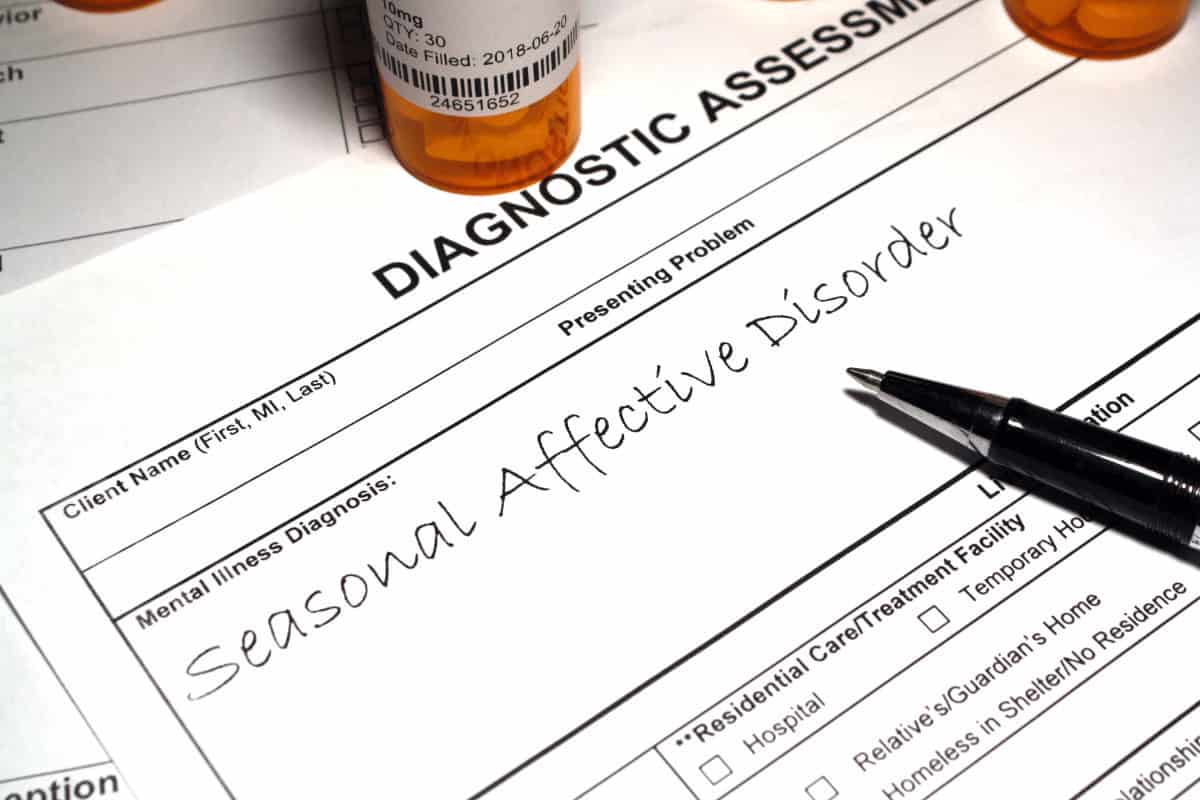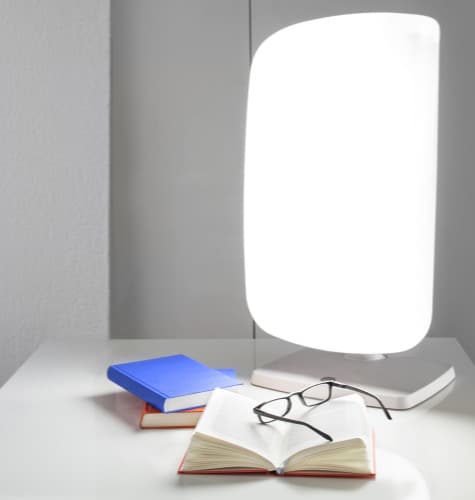Seasonal Affective Disorder in a Pandemic Winter

Does this winter have you feeling down? Read on for some helpful tips to combat seasonal affective disorder (or SAD) this year.
Extra Blues Winter Blues
During this pandemic season, many are reflecting on the unprecedented years of 2020 through 2021. While many are looking forward to all that is to come in 2022, there are still some considerations to take in during this winter. At the top of that list is mental health.
Paying Attention to Mental Health
The mental health crisis in this country is substantial. The ongoing isolation and lack of in-person connection with friends, family, and co-workers can be what are considered “risk factors” to depression (that means something that may make you more vulnerable to a certain condition). Winter brings its own challenges to these vulnerabilities, and that is where we find seasonal affective disorder.

What Is Seasonal Affective Disorder, and What to Do About It?
Seasonal Affective Disorder is when an individual experiences symptoms of depression that are specific to the season and not year-round. This seasonal depression, or the winter blues, can especially impact individuals who live in areas with colder temperatures and shorter days during the winter months.
There are several strategies individuals commonly use to combat SAD and even prepare for it (those who are used to the seasonal change in mood). This year specifically, I find myself suggesting these antidotes to many clients, even if they don’t meet diagnostic criteria. It is possible to have ‘the blues’ or just feel a little down and not fit the SAD descriptors, that isn’t really what’s important in this case. The goal is always to improve or maintain healthy mental, physical, and emotional well-being.
Taking Control of the Winter Blues and Seasonal Affective Disorder
Seasonal affective disorder can be tough, but the following tips can help to brighten your mood.
1.Get a Therapy Sun Light.

Also called light lamps, happy lamps, or therapy lamps. These are very commonly used in areas where days are much shorter. They have shown positive effects as they simulate sunlight rather than regular room lighting. If you read reviews on popular models, you’ll often see its consumers saying how it helps them get up in the morning. Sleep is essential. (If this is a key issue for you, light therapy is something more specific to this to research and seek treatment for.)
2. Get to Bed at a Decent Hour.
Not to sound like your mom, but I am a mom so let’s just go there a minute. Turn off your phone, Netflix, and whatever else is keeping you from getting to your bed. If it is hard for you to get sleepy while trying to adjust your bedtime, consult your doctor about using melatonin or a supplement that may help you feel more sleepy and restful. Bad bedtime habits are a trend of 2020 (I say as I write this when I should really be going to bed as well).
3. Assess Your Social Media Situation.
If you like in a cold part of the country (like me) and have friends who live in sunny California (like me), you may need to check in with yourself about how you feel when you see their posts. Just as you should about all social media, the illusion of staying connected is just that. It can also make you very aware of the distance and loneliness in your life. And if you struggle to redirect those thoughts and harness them, you may find yourself in a challenging place.
4. Routines Are Helpful, But Give Yourself a Break.
Routines are excellent for establishing healthy habits. I recommend them often and do my best to implement my own. However, I often hear clients complain that they’ve let themselves down when things get off track. Or that a week off the routine has destroyed progress. First of all, that’s not true. The fact you notice a routine allows you to be in one place mentally, and the absence of it takes you elsewhere is progress on its own. We are not robots. Life happens. And as it does, you will need to tweak your routine. Maybe something you thought you’d love isn’t working for you as you hoped. That’s ok. There are always different ways to do something. Sometimes, you notice the need to change your routine because you are changing.
5. Get Outside.
The air in our homes can get stale. Get outside, even if you’re just opening a window for a minute. Take some deep breaths and enjoy it.
6. Assess Your Home Environment.
We are home a lot. And the amount we are home may impact and even intensify some symptoms of SAD. Make your space your own and make changes that can help the feelings you may need to fight off during this time. If you’re working from home, try to work near a window. Make your space as airy as possible. Even moving some furniture to make your space have a move open flow can result in some positive mental movements in your brain.
7. Eat Healthy Foods.
Food absolutely impacts our emotional well-being. If we eat junk, we will feel like junk. Weight gain is not uncommon during these times and can be linked to symptoms of depression.
The Bio/Psycho/Social Components of Seasonal Affective Disorder
To expand on number seven more, here is something that emphasizes that point and all of the others. When I meet with clients, I always try to help them understand what they are experiencing by breaking down what they are sharing with me into a bio/psycho/social assessment. Often, people come to therapy focused on the psycho or psychological component of this. But really, the biological, the psychological, and the social elements are all integrated and can help each other out, just as they can pull each other down.
The Biological Component of Seasonal Affective Disorder
The biological, going back to number seven, is how we take care of our bodies. Going to the doctor, getting our lab work done regularly, so make sure that we are addressing what we need to address as we are getting older. There are physical conditions that can mimic mental health symptoms. So it’s always important to know what’s going on in your body so that you understand your mind more.
It’s also important to feed your body in ways that will make it feel good in the long term, not just the short. Treating yourself occasionally is great and fun, but when it becomes a habit, you’ll feel it on your body and in your mind.
The Psychological Component of Seasonal Affective Disorder
Seasonal affective disorder presents with symptoms of depression that can look like irritability, severe lack of motivation, poor appetite, struggling to get out of bed, and more. Working with a therapist can help you work through these symptoms so that their impacts on your day-to-day are less severe. Several therapeutic approaches can help SAD, and it’s ok to ask your therapist what their approach is and if they have worked with clients who have SAD in the past.
Also, if your symptoms interfere with your daily routines and things like work, parenting, or running errands, ask about a referral to a psychiatrist. It isn’t uncommon for people to take anti-depressants to boost serotonin levels in their brain to reduce symptoms of seasonal depression. A consultation with one doesn’t mean you will be prescribed medication, but it can help see if it is something you can benefit from.
The Social Component of Seasonal Affective Disorder
Connection is important. How are you connecting with people during this time? While socializing takes more thought than we ever thought necessary, finding creative ways to do so is important. It’s also important to check in with your partner and make sure you’re connecting there as well. Seasonal affective disorder can cause people to isolate or pull away from connections. So making small goals of reaching out by text or phone call to one person a day can help you stay connected and may pull your focus elsewhere, even if only temporarily.
This Too Shall Pass
Typically, with treatment, seasonal affective disorder is manageable and seasonal. So while the colder, darker months feel just that, tapping into supports and using the tools discussed in this article will help you navigate this time. Help is always out there; don’t hesitate to ask.
For more family wellness tips and advice, check out the Mental Health category on FamilyApp.





